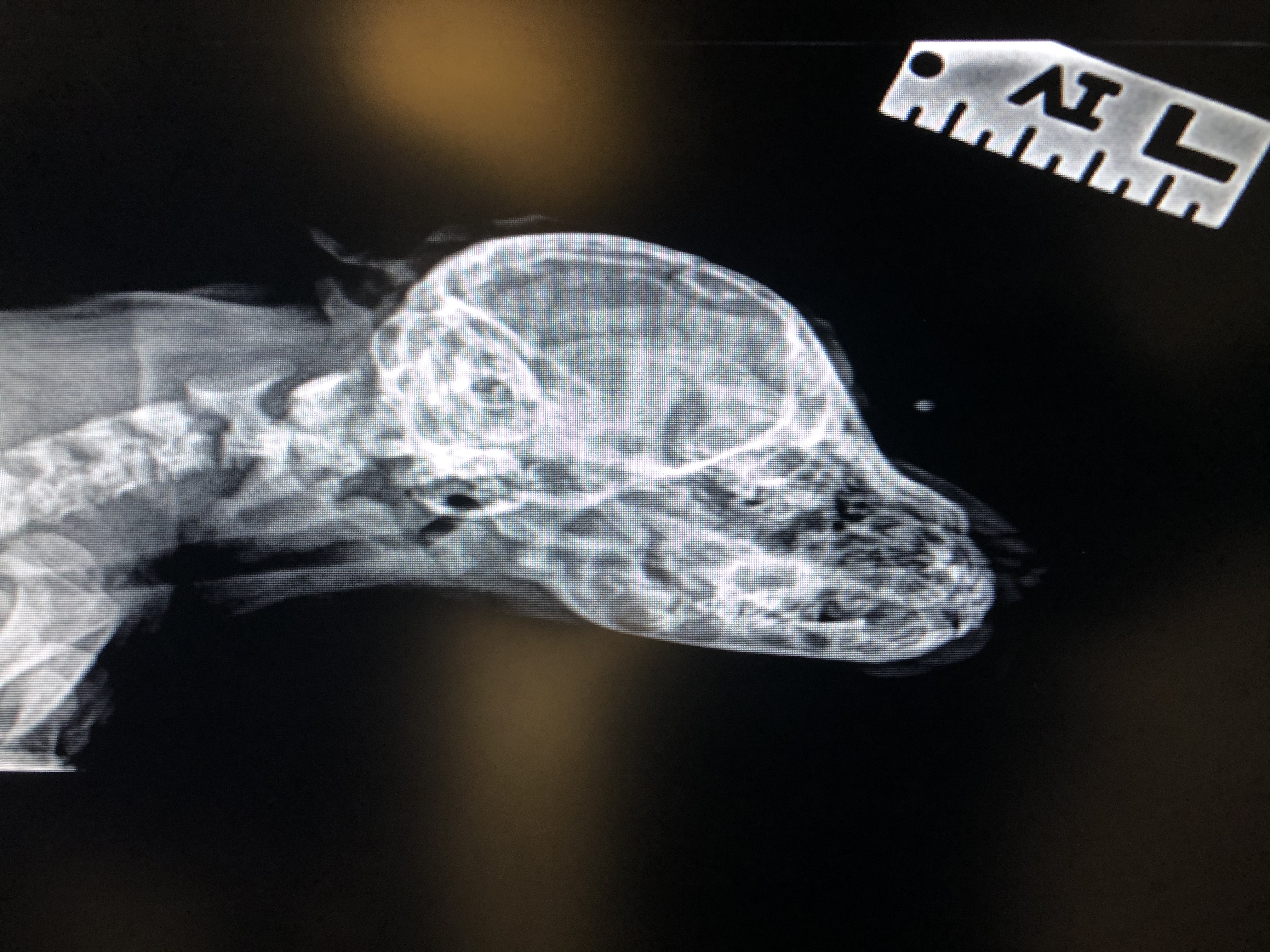
Does This 'Unicorn Puppy' Really Have an Extra Tail?
Despite appearances, the puppy's "face tail" is not actually a tail.

This puppy may not be quite as unique as a unicorn, but he's close: The pint-sized pup appears to have a tail protruding out of his face.
The 10-week-old puppy was rescued this month by Mac's Mission, an animal shelter in Cape Girardeau, Missouri, that works with special-needs dogs, according to NBC Today. The appendage on his forehead is about a third of the size of his actual tail, Today reported. The striking feature led shelter staff to dub the pup Narwhal, after a type of Arctic whale with a large tusk that resembles a unicorn horn.
However, despite appearances, it is not actually a tail. X-rays showed the appendage doesn't have vertebrae, which are typically found in tails.
"It certainly looks just like a tail, but we did X-rays, and it's all just skin," Dr. Brian Heuring, a veterinarian at Cape Small Animal Clinic who treated Narwhal, told Today. As such, the appendage doesn't move or wag. It is essentially a birth defect.

Still, the feature is certainly unusual. "I've been a veterinarian for 16 years, and I've never seen anything like this,'' Heuring said. He could see no reason to remove the extra "tail," according to a Facebook post from Mac's Mission. "The unicorn face tail does not bother Narwhal, and he never slows down just like any normal puppy," the post said.
Narwhal will need to stay at the shelter a little longer before he is available for adoption, because the staff want to make sure he doesn't develop any problems with his extra "tail" as he gets bigger.
- 7 Surprising Health Benefits of Dog Ownership
- 11 Ways Your Beloved Pet May Make You Sick
- 20 Weird Dog and Cat Behaviors Explained by Science
Originally published on Live Science.
Sign up for the Live Science daily newsletter now
Get the world’s most fascinating discoveries delivered straight to your inbox.


Rachael is a Live Science contributor, and was a former channel editor and senior writer for Live Science between 2010 and 2022. She has a master's degree in journalism from New York University's Science, Health and Environmental Reporting Program. She also holds a B.S. in molecular biology and an M.S. in biology from the University of California, San Diego. Her work has appeared in Scienceline, The Washington Post and Scientific American.










